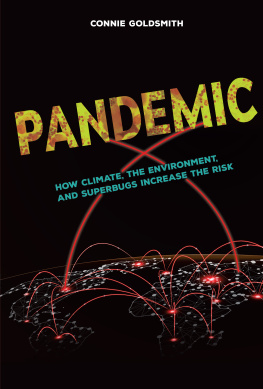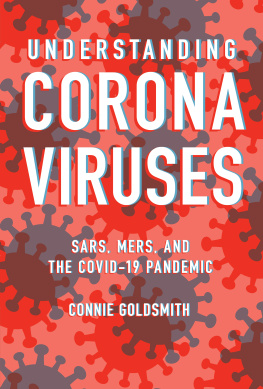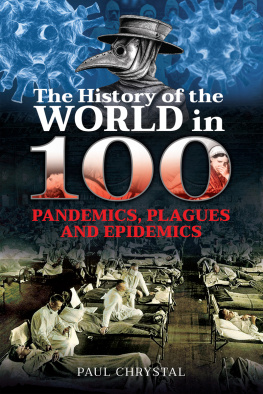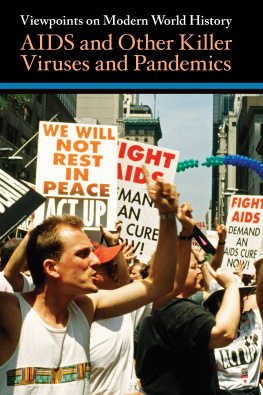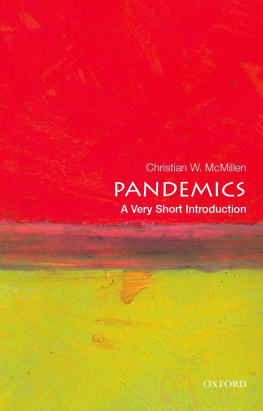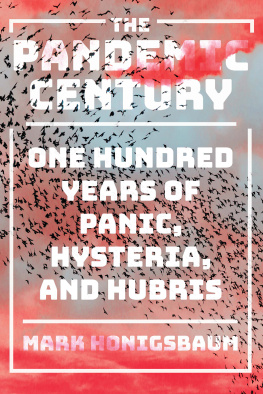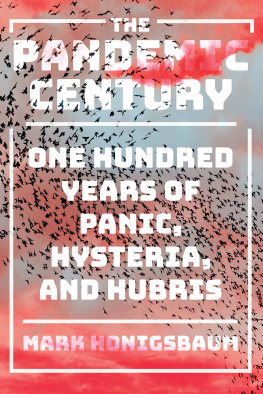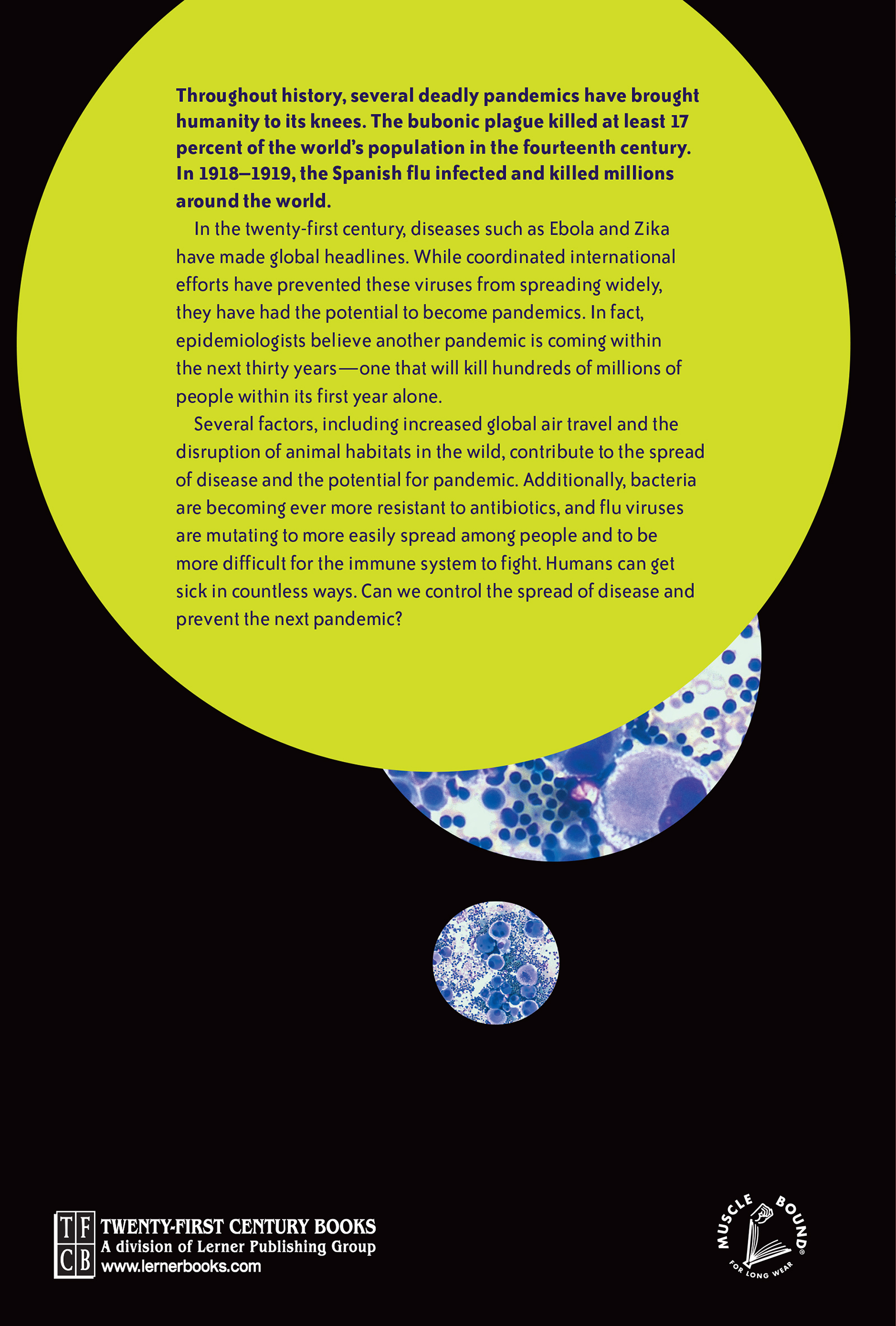Text copyright 2019 by Connie Goldsmith
All rights reserved. International copyright secured. No part of this book may be reproduced, stored in a retrieval system, or transmitted in any form or by any meanselectronic, mechanical, photocopying, recording, or otherwisewithout the prior written permission of Lerner Publishing Group, Inc., except for the inclusion of brief quotations in an acknowledged review .
Twenty-First Century Books
A division of Lerner Publishing Group, Inc.
241 First Avenue North
Minneapolis, MN 55401 USA
For reading levels and more information, look up this title at www.lernerbooks.com .
Main body text set in Adobe Garamond Pro 11/15.
Typeface provided by Adobe Systems.
Library of Congress Cataloging-in-Publication Data
Names: Goldsmith, Connie, 1945 author.
Title: Pandemi c : how climate, the environment, and superbugs increase the risk / by Connie Goldsmith.
Description: Minneapolis, M N : Twenty-First Century Books, a division of Lerner Publishing Group, Inc., [2018 ] | Audience: Ages 1318 . | Audience: Grades 9 to 12 . | Includes bibliographical references and index.
Identifiers: LCCN 2017043693 (print ) | LCCN 2017046752 (ebook ) | ISBN 781541524767 (eb pdf ) | ISBN 781512452150 (l b : alk. paper)
Subjects: LCSH: EpidemicsJuvenile literature . | Communicable diseasesClimatic factorsJuvenile literature . | NatureEffect of human beings onJuvenile literature.
Classification: LCC RA653.5 (ebook ) | LCC RA653.5 .G65 2018 (print ) | DDC 614.4dc23
LC record available at https://lccn.loc.gov/2017043693
Manufactured in the United States of America
1-42909-26514-1/8/2018
9781541538221 ePub
9781541538238 ePub
9781541538245 mobi
Contents
Chapter 1
Bugs in the News
Chapter 2
Bugs on a Plane
Chapter 3
Climate Change, Insects, and Animals
Chapter 4
Disruption of Animal Habitats
Chapter 5
Crowding in Peace and War
Chapter 6
Superbugs on the March
Chapter 7
Pandemic Influenza
Chapter 8
Preventing a Pandemic
Chapter 1
Bugs in the News
Over the last decades there have been about thirty newly emerging diseases that had the potential to be pandemics. Its not a matter of if there will be a global pandemic, its just a matter of when and which virus and how bad.
Dr. Larry Brilliant, epidemiologist, 2017
W hat do you think are the most dangerous animals in the world? Great white sharks? Poisonous snakes? People? Not even close. Believe it or not, mosquitoes are the most dangerous animals in the world. They are directly responsible for an estimated 725,000 human deaths each year. That is far more than the total number of deaths each year caused by people, snakes, sharks, and many other animals and insects combined. Why are mosquitoes so deadly? These flying disease factories carry more than a dozen lethal viruses and the malaria parasite. And these diseases a re among the most dangerous in the world.
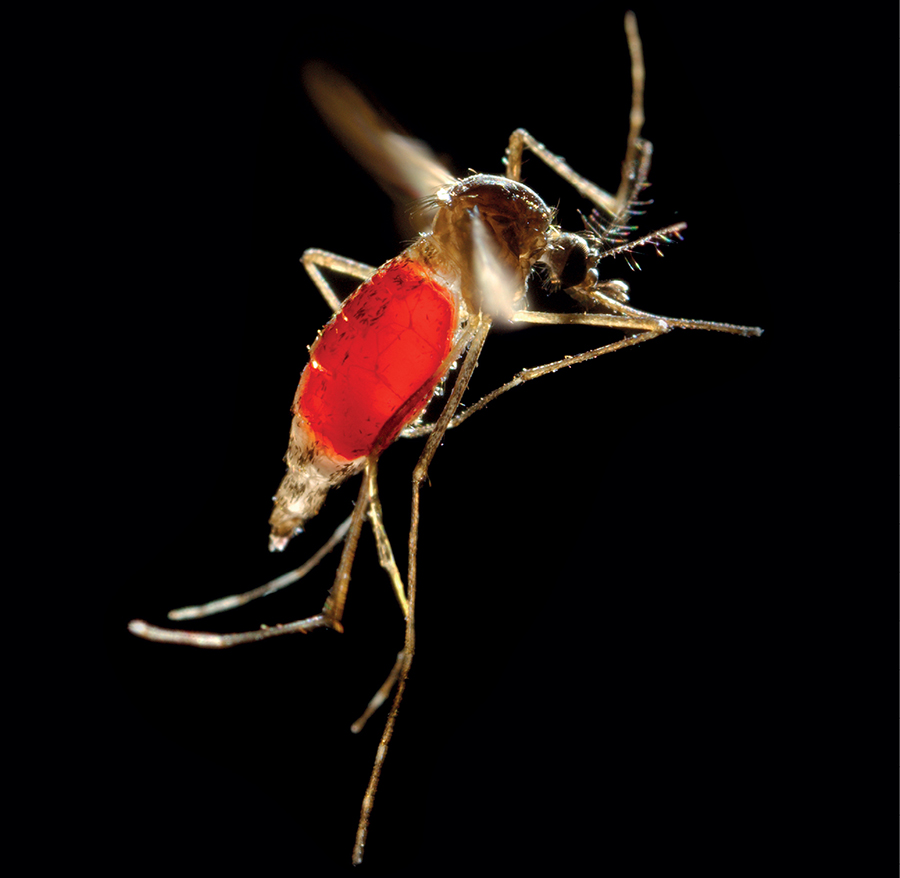
A recent blood meal is visible in this mosquitos transparent gut. As it feeds, the mosquito can spread the malaria parasite and the viruses that cause Zika, dengue, and chikungunya.
Pandemics (disease outbreaks that affect many people in many parts of the world) can bring the human race to its knees. History is filled with stories of such devastation. For example, in the fourteenth century, the Black Death wiped out at least 17 percent of the worlds population. In modern times, epidemics (diseases that affect a large number of people in several places) have begun invading news reports around the globe.
In 1999 West Nile virus, spread by mosquitoes, reached the United States, and it has since spread to nearly every state. In 2003 severe acute respiratory syndrome (SARS) infected thousands of people and killed hundreds around the world. More recently, the Ebola and Zika viruses have spread death and tragedy on both sides of the Atlantic Ocean. Foodborne illnesses sicken an estimated forty-eight million Americans each year, killing thousands. And each year, like clockwork, one or more new strains of the flu begin to make the rounds.
No More Epidemics is an international campaign dedicated to preparing the world for epidemics and pandemics. Based on the worlds population and infection rates of past pandemics, experts affiliated with the campaign predict that the worlds next pandemic could kill between 180 and 360 million people during its first year alone. In 2017 many disease experts predicted that a pandemic is likely to occur within the next two or three decades. Some say it could be as soon as ten to fifteen years.
Several of the bacteria and viruses that have made headlines in the twenty-first century could cause the planets next pandemic. New diseases are becoming more common, and old ones are reappearing more often. And the spread of all of these diseases has to do with human activity.
Know Your Demics
Epidemiologistsscientists who study diseasesrate the severity of a particular disease occurring at a given time in one of four ways:
- Outbreaks strike a limited number of people in a limited area and last a short time. Monkeypox, a distant relative of smallpox, appeared for the first time in the United States in 2003. During the two-month outbreak, more than seventy people in six midwestern states developed monkeypox.
- Endemics are diseases that are always present in a region. For example, malaria is endemic in several countries in Africa, such as Democratic Republic of the Congo, Nigeria, and Uganda.
- Epidemics hit a large number of people in several areas at the same time. In 20142015, scientists classified Ebola as an epidemic because it infected large numbers of people in three countries in West Africa.
- Pandemics affect many people in many parts of the world at the same time. For example, the Spanish flu of 19181919, which sickened millions of people around the world, was a true pandemic.
A Brief History of Pandemics
Pandemics are not new. Ancient written records show that pandemics have occurred over many centuries. Historians believe that smallpox and bubonic plague likely triggered the earliest-recorded pandemics. Smallpox alone has caused an estimated one billion deaths since it first appeared around 10,000 BCE, although most cases occurred many centuries before medical science could positively identify it. Pandemics have changed the course of history, especially the three major historical pandemics: the Black Death, Spanish influenza, and human immunodeficiency virus (HIV), which causes acquired immunodeficiency syndrome (AIDS).
In the middle of the fourteenth century, the world population was about 450 million people. The bubonic plague, sometimes called the Black Death, killed between 17 and 44 percent of the world population. In just four yearsfrom 1347 to 1351plague wiped out between one-third and one-half of all Europeans. Yersinia pestis ( Y. pestis ) is the bacteria responsible for plague. The bacteria live in fleas, which live on rats and other rodents. Italian traders returning from Asia brought the disease back with them, carried by flea-infected rats on their ships. Once a ship docked, the rats could move off the ship and enter the port. From there the rats, carrying the plague-infected fleas, spread into the city or town. The fleas infected local rats that lived close to people. The infected fleas moved between rats and people, easily infecting both.

